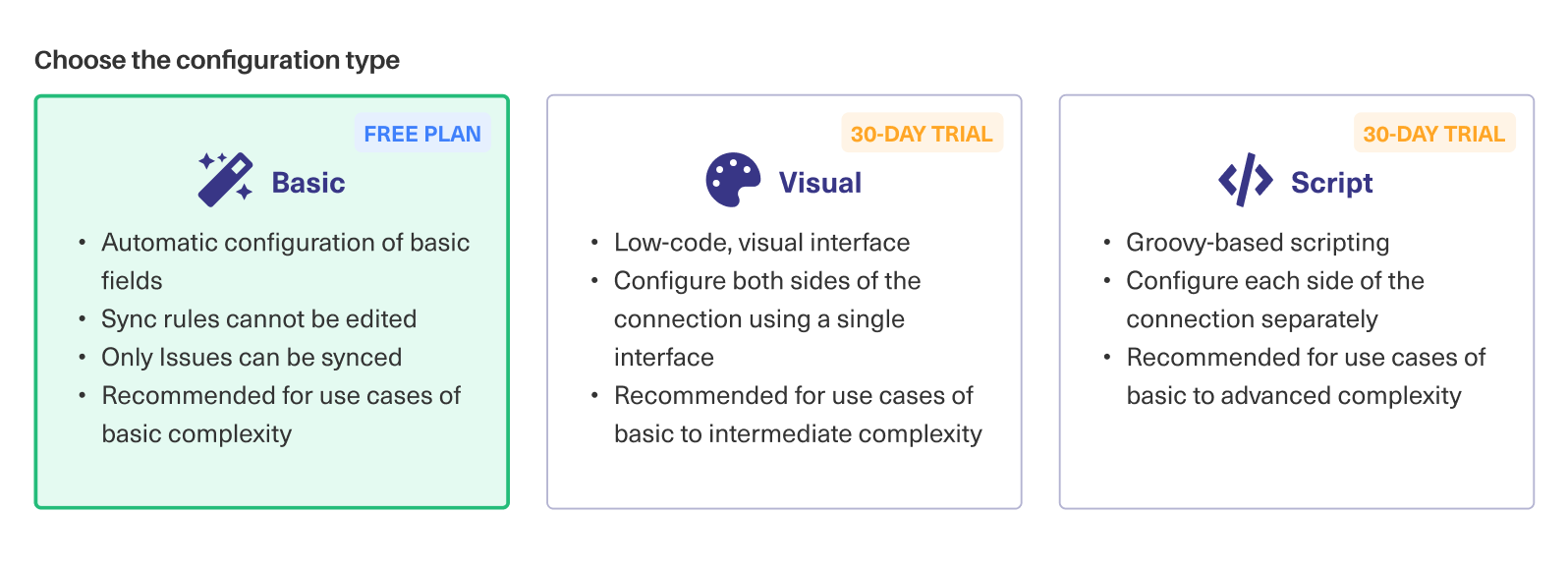Configuration Modes
Important: You cannot toggle between the different modes. To do so, you need to create a new Connection in Visual mode, Script mode, or Basic mode.
Configuration modes in Exalate define how synchronization is customized between two instances. Exalate offers 3 configuration types (modes): Basic, Visual, and Script.

The Basic Mode
- A limited number of entities can be synchronized.
- It has predefined mappings (Sync Rules) between the entities that cannot be edited.
- It comes with a Free Plan that allows up to 1000 free syncs per month.
- It is recommended for use cases with basic complexity.
Note: You cannot configure connections set up in the Basic mode since they come with a default set of rules & mappings. To configure them, you need to upgrade to Visual or Script mode.
The Visual Mode
- It has a low-code visual interface.
- You must have admin access to both task management systems.
- You can add Groovy-based scripts for advanced synchronization cases.
- It is recommended if you want to sync between different departments or projects within a single company (intra-company).
- It is recommended for use cases of basic to intermediate complexity.
The Script Mode
- It comes with an intuitive Groovy-based scripting engine.
- You don't need admin access to both task management systems.
- It gives you independent control over incoming and outgoing information (decentralized integration).
- It is recommended if you want to sync between different companies (cross-company integration).
- It is recommended for complex or advanced use cases.